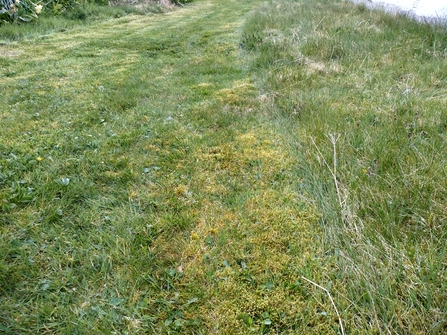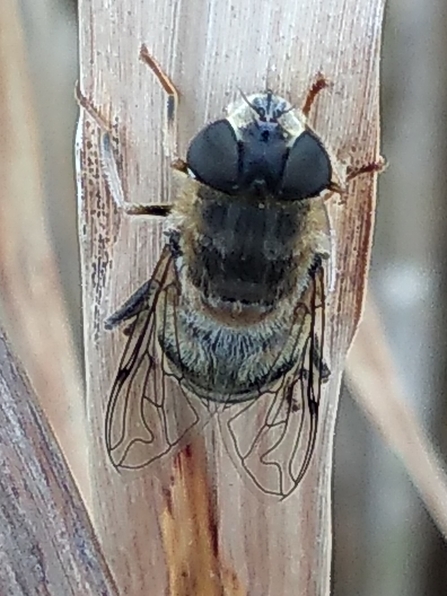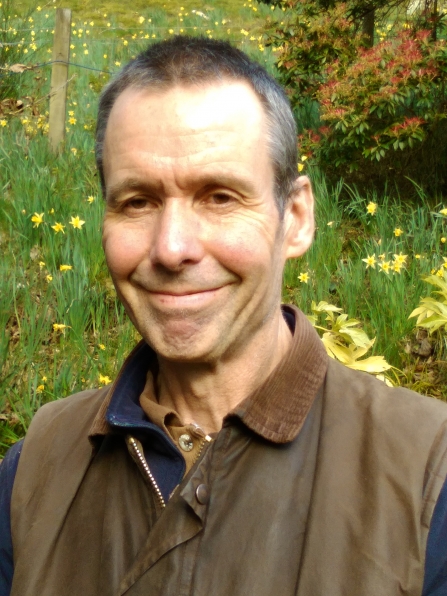I've recently been tidying the straggly areas of the wild flower areas within the lawns to set the scene for the season. The sward is normally mown down in the autumn and loose clippings are raked off to prevent the encouragement of unwanted weed species accelerating within the grasses
Grow don't mow
Forget me not. Photo Kevin Line.

Mown lawn set against untouched sward. Photo Kevin Line.
Last autumn, I took a different approach and decided to leave the wild flower areas I had created untouched from the mower. The first reason was to leave wildflowers, such as black knapweed, for the birds to feast on the seed heads, alongside the grass species.
Secondly, to see as an experiment as to how prolific the wildflowers would return after setting seed. The plan will be to mow and rake the sward off this autumn after a two year cycle.
It's encouraging to see a variety of wild flowers growing, which include orange hawkweed, the most prolific in the area. Some of the wild flora is in flower, whilst the others are displaying their fresh mid spring foliage, ready to burst into life! I think the Aurum italicum is one of the most impressive of the wild flowers in terms if its foliage. The list includes:
- Arum italicum (Italian arum)
- Myosotis (forget me nots)
- Fragaria species (wild strawberry)
- Vicia sativa (common vetch)
- Alchemilla Mollis (lady's mantle - cultivated perennial)
- Cardamine pratensis (lady's smock)
- Meconopsis cambrica (Welsh poppy)
- Leucanthemum (ox-eye daisy)
- Centaurea nigra (black knapweed)
With trial and error, it's a great project to undertake. I think if we have sections of lawn, however big or small, consider leaving a percentage untouched from the mower. Stand back and see what wildflowers might just flourish in that given area !
Last month's task
You will recall the task of pruning back the various grass species to rejuvenate new growth. I spotted this bee species on the grasses of Miscanthus sinensis, Zebra grass (China/Japan).
You will be pleased to know that prior to pruning back the Miscanthus, I gently removed the bee using a piece of paper onto nearby vegetation. What really catches the eye with this photo are the lines on the translucent wings. The joys of nature!

Bee on Miscanthus sinensis. Photo Kevin Line.

Kevin Line
Kevin is a lifetime Plantsperson, Horticulturist, Gardener & Conservationist, whose work spans over 40 years. He has worked for the National Trust, BBC Gardeners World and as a Head Gardener (North Cotswolds). Kevin is currently the Plantsperson at Lakeland Leisure Park, Flookburgh, and is also working in the area of conservation and ecology. Prior to that he developed a wildlife garden in Bowness On Windermere for three and a half years. The garden opened in 2019 under the National Gardens Scheme and proceeds were raised for Cumbria Wildlife Trust.
Kevin has a strong passion for wildlife gardening and is a member of Cumbria Wildlife Trust, Butterfly Conservation, Botanical Society Of Britain & Ireland and the RSPB. His passion and deep-rooted interests extend to wildlife & habitat conservation.
Kevin plans in the near future to start his own Wildlife Gardening Consultancy business.










